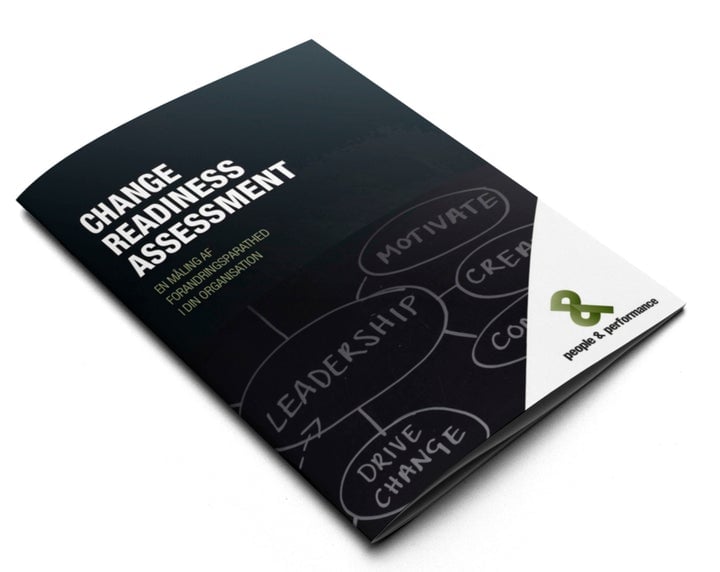Preparing for major changes is essential to a successful change process.
Major changes such as a new strategy, a new organisation or new processes will affect the employees and the organisational culture.
These types of change require thorough preparation in order for you to achieve successful implementation. And thorough preparation is achieved through insight into the company’s ability to implement future changes.
Following these three pieces of advice will bring you closer to the necessary preparation:
1. Involve the organisation and activate your ambassadors
Involve the organisation as soon and as much as possible. Managers and employees alike generally want to be included and involved, and they all wish to contribute positively to developing the company. We know that employees are motivated by being invited in, close to the company’s core – and the more tangible the challenge, the more the employees want to contribute.
Having in-house ambassadors will also contribute greatly during change processes. In basically all change processes, there are employees who embrace the change – and they can help you advance the change process. So use your organisation, and put your ambassadors into play. Their words and positive attitude to the change are extremely valuable.
2. Tell a change story that speaks to everyone
When the management group or the steering committee has defined the scope of the change, it must be communicated to the organisation – and it must make sense to each individual employee.
It is vital that you have agreed on what and how you want to communicate about the change – and you must know it by heart. When that is decided, it is important that you communicate about the change again and again whenever you have the opportunity. The repeated impact and explanation of the change will create a sense of security, and the management will be perceived as a unity that will be able to lead the organisation through the change.
An important piece of advice is also to speak directly to the employees. You must communicate clearly what the change will mean to each and every one. If they understand how their situation will change, they will find it easier to accommodate to the change.
3. Embrace the reactions to change
Many leaders fear the organisation’s reaction to a change process. Leaders fear critical and challenging questions and the resistance which may arise. But critical voices will only guide you towards better leadership. If there are no reactions, positive or negative, you lose touch with your organisation, and you will be forced to lead them through the change in the dark. Do not automatically take critical questions to be a sign of resistance – in most cases, they are simply an expression of engagement from a confused employee who is trying to understand the terms of the change.

Is your company ready to change?
Try our Change Readiness Assessment and learn more about your own change readiness:



